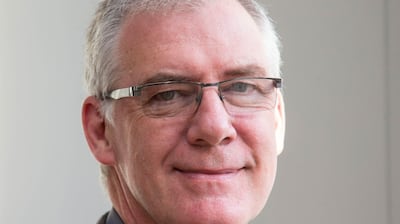Mother Teresa is quoted as saying: “Never worry about numbers. Help one person at a time, and always start with the person nearest you.” Commentary by Pope Francis on the importance of the “culture of encounter”, central to his book Let Us Dream: The Path to a Better Future also comes to mind.
In these times of counting numbers and social distancing, the words of both spiritual leaders are quite thought-provoking. Throughout different restrictions, regulations covering attendance at church services moved to and fro between online-only services and socially-distanced liturgies with limits on numbers attending.
The quality of church services, whether online or in-person, has become a live conversation during the pandemic. Can faith communities cultivate a “culture of encounter” despite restrictions on numbers and while keeping our distance?

The “C-19 & Church 21” survey was conducted in spring 2021 across the State and the United Kingdom. It was a collaboration between the Mater Dei Centre for Catholic Education (MDCCE) in Dublin City University with York St John University and the University of Birmingham.
Just less than 5,000 people participated, with 734 identifying as Catholic and living in the State. The research team at MDCCE were particularly interested in exploring the attitudes of Irish churchgoers to the varying experiences of worship during the pandemic.
It may be that parish work previously done quietly yet efficiently has become more visible, better acknowledged and perhaps more appreciated
Solidarity and the sense of “we’re in this together” have been to the forefront of much of Irish life over the past year. Though such attributes have always been central within faith communities, the research yielded some notable results.
Less than a tenth (8 per cent) of Irish respondents were ordained. Yet, almost twice this figure (15 per cent) indicated they led online services, suggesting involvement of lay people in leadership roles. Thirteen per cent led socially-distanced services. These could include facilitating prayer at group meetings, scripture study and reflection, and leading services involving schools.
Leading online services was largely a positive experience for clergy and laity, described as “spiritually rewarding” (75 per cent) and “satisfying” (74 per cent). Two-thirds indicated it felt “fulfilling” (66 per cent) and “energising” (64 per cent).
Parishes have had to adapt to innovative ways of working, addressing new considerations such as IT and social media, sanitisation of church buildings, and dealing compassionately with many anxieties and challenges within communities. It may be that parish work previously done quietly yet efficiently has become more visible, better acknowledged and perhaps more appreciated.
It seems new roles have been identified and talents discovered.
The research team also sought insights into the experience of those attending online services. These were accessed by 87 per cent of the Irish respondents to the survey. Operational aspects score highest with 85 per cent saying the services were “easy to access”, 71 per cent considering online services “fit-for-purpose” and 69 per cent said they were “professional”.

Other aspects were less positively received. Just over half (54 per cent) of online attendees felt “fulfilled”. Less than half (48 per cent) found them “engaging”. What about the sense of “encounter” when it comes to socially-distanced church services? When asked to share their experience of attending such services during 2020, respondents were generally positive.
A smaller proportion (71 per cent) had attended socially-distanced in-church services in comparison to accessing online services. Three-quarters (75 per cent) found socially-distanced services “engaging” and 71 per cent felt “fulfilled”.
Similar responses were gathered from those who led these services with 68 per cent finding them “spiritually rewarding” and 72 per cent “satisfying”.
The findings suggest that efforts made across the country to facilitate online church services when most needed were certainly availed of, and largely appreciated. The encounter of physically gathering, however, is still preferred.
It is worthwhile to reflect on the learning achieved and to ask what might Irish faith communities bring from their pandemic experience
It is noted that the majority of respondents to the survey were regular churchgoers prior to the pandemic with 57 per cent stating they attended church once a week and 24 per cent attended most days.
Unsurprisingly, therefore, the majority (76 per cent) of lay respondents wanted to get back to their previous worship patterns if possible, with 73 per cent stating they will cherish their local church more than they used to. Just more than a third (37 per cent) reported that they will develop their online expertise.
Perhaps the biggest learning curve has been for leaders in faith communities. Two-thirds (66 per cent) agreed that they will draw inspiration from the new practices they have acquired. The findings suggest an increased role by laypeople.
As churches in the Republic reopen for public worship this week, it is worthwhile to reflect on the learning achieved and to ask what might Irish faith communities bring from their pandemic experience into the so-called “new normal”.
Could the pandemic have given some people the opportunity to use skills heretofore underused, or created new roles, giving more individuals a taste of what it feels like to actively contribute to a faith community and be valued?
Will the return to public worship be solely a return, or will it offer a path to a better future?









